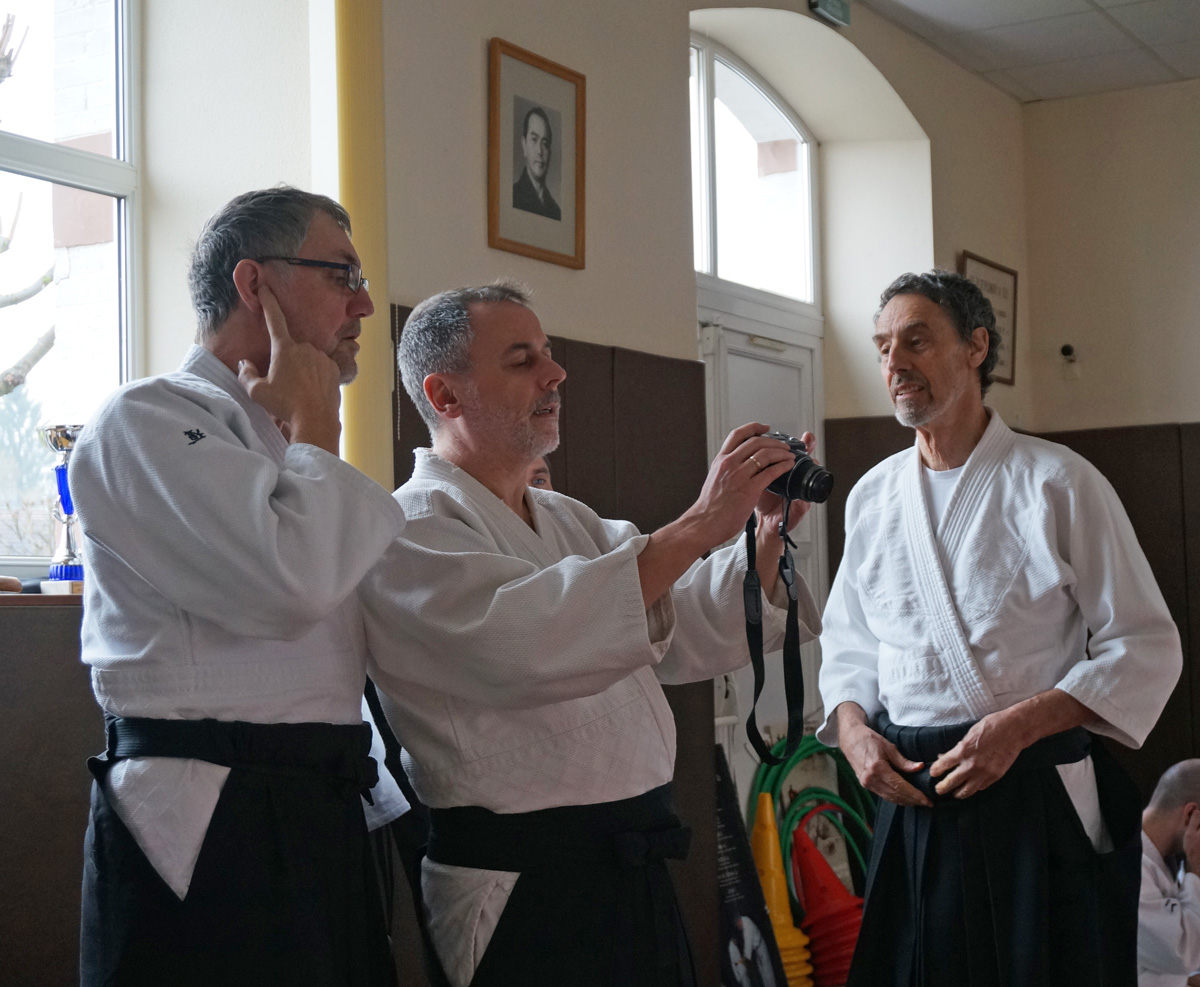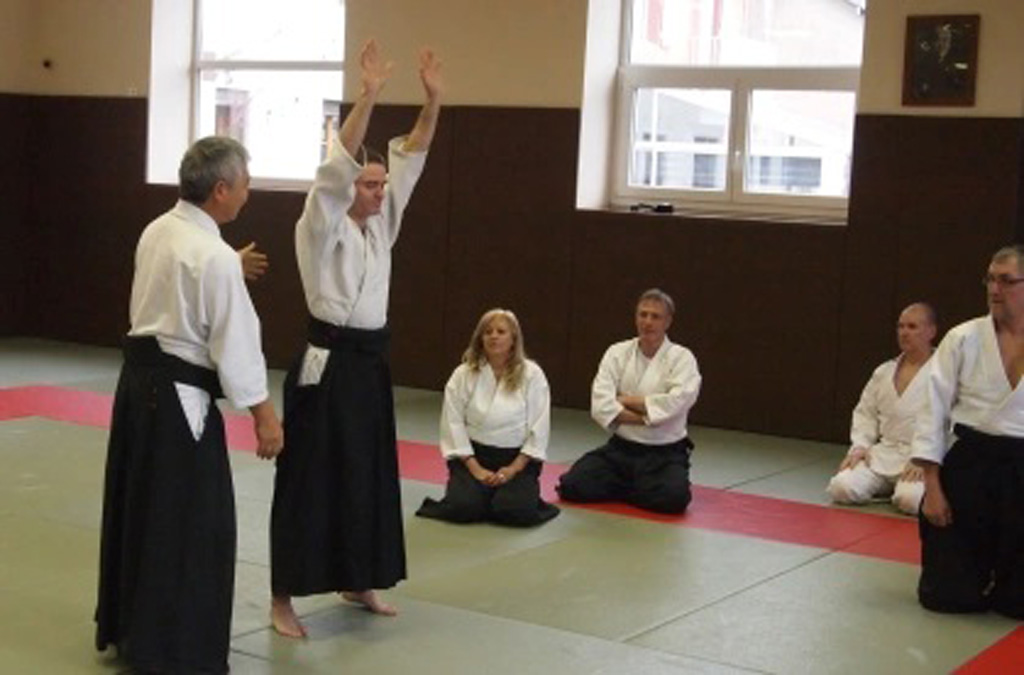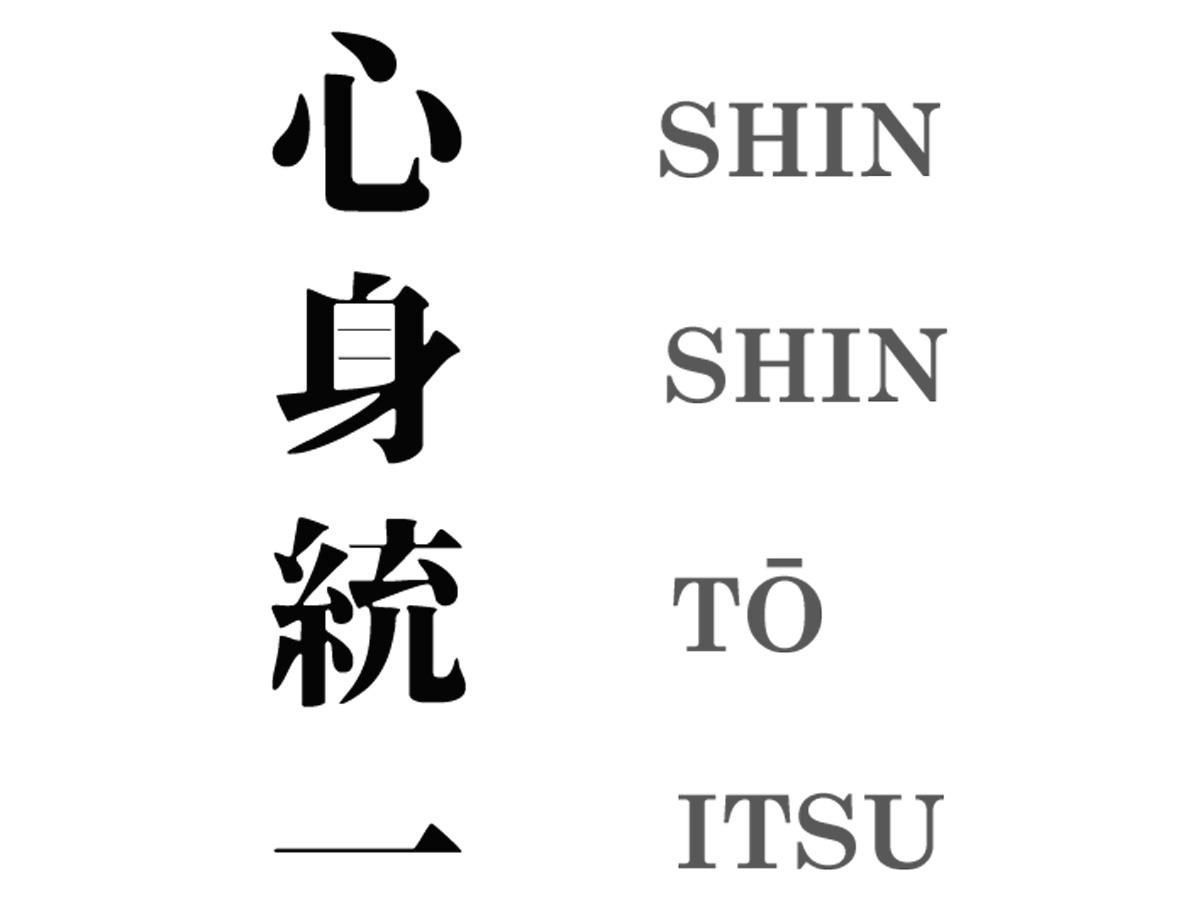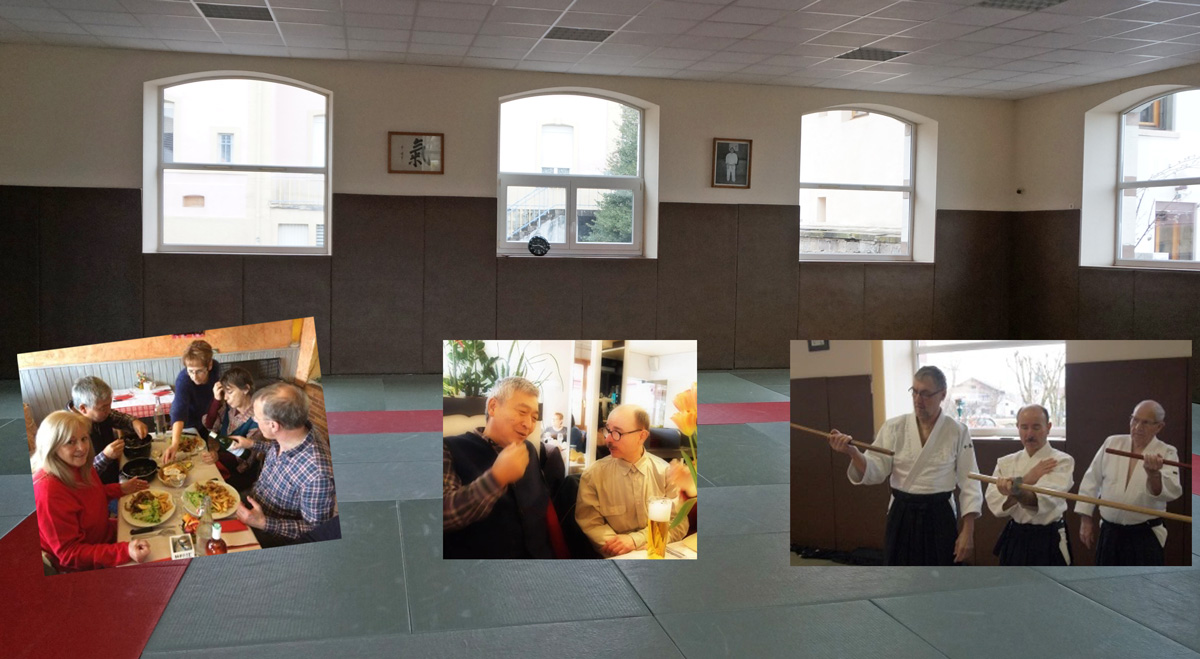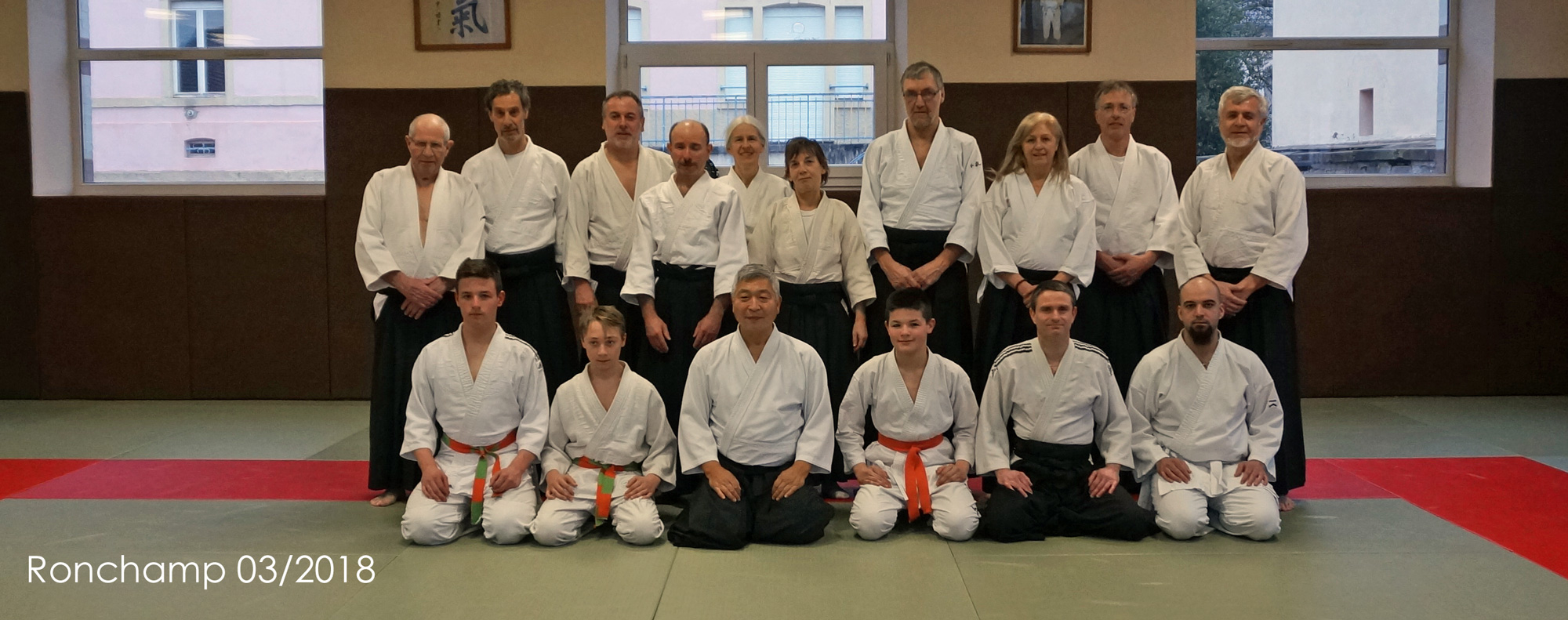
Franche-Comté
This year's seminar with Doshu Yoshigasaki in Ronchamp took place from March 16th to 18th. As usual, the seminar began on Friday evening and ended around noon on Sunday.
As always, club members from Ronchamp, Beaucourt, and Belfort, as well as guests from Belgium, Switzerland, and Germany, were on the mat. Yvette and Bernhard came from Ticino. Yves and Michael came from Baden-Württemberg, but they had to return immediately after the morning training on Saturday. Like last year, Eric, who is blind, came from near Nancy. This meant that Sensei repeatedly addressed details that are important for blind aikido practitioners and that sighted aikido practitioners rarely pay attention to.
Overall, the seminar was not particularly demanding in terms of physical fitness. This was partly due to the large number of veterans on the mat and also because Sensei presented and practiced a new concept for understanding aikido techniques.
